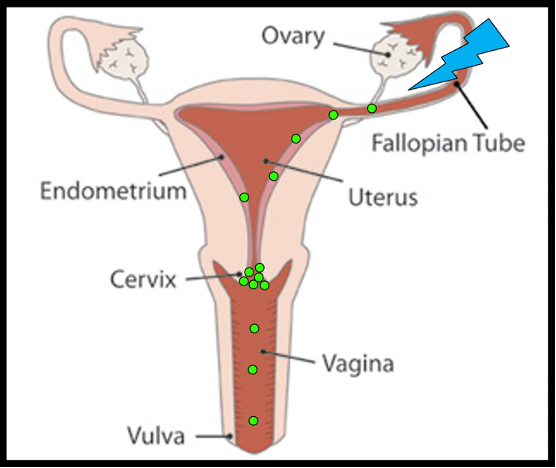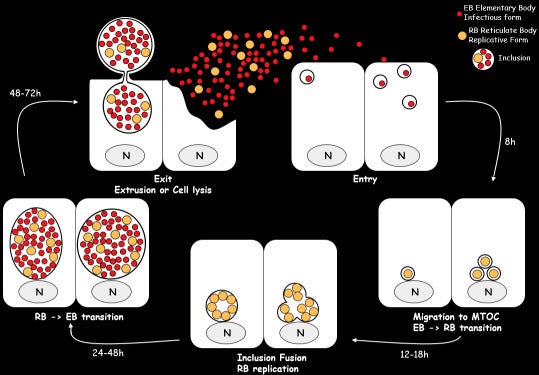Research
Chlamydia trachomatis is a gram-negative bacterial pathogen of tremendous public health concern. Ocular serovars lead to trachoma and genital serovars are the leading cause of bacterial sexually transmitted disease in developed countries. Vaccines are not available and despite the implementation of C. trachomatis screening programs, and the effectiveness of antibiotics to treat trachoma and uncomplicated sexually transmitted chlamydial infection, case rates are not declining and reinfection rates are increasing.
Chlamydia is characterized by a biphasic developmental cycle that occurs exclusively in the host cell (Fig.1). Once internalized, Chlamydia resides in a membrane bound compartment, the inclusion, and alternates between an infectious form (Elementary Body, EB) and a replicative form (Reticulate Body, RB). The cycle lasts two to three days depending upon the species.
Upon infection of the lower human or murine female genital tract, Chlamydia replicates in the epithelium of the endocervix. If the immune system fails to clear the infection, Chlamydia ascend to the upper genital tract, resulting in a potent inflammatory response with long-term consequences on female reproductive health.

Figure 2: Chlamydia dissemination in the female genital tract
Our NIH funded projects investigate the role of Chlamydia-specific effector proteins in bacterial progression through the developmental cycle (EB->RB and RB->EB transition), and in inclusion interaction with cellular organelles and lipid acquisition. Another aspect of our research focuses on the development of relevant 3D in vitro models to investigate the role of the microbiotae and sex hormones in Chlamydia infections.
Our ultimate goal is that a better understanding the molecular mechanisms underlying Chlamydia-host interaction will reveal drug targets to facilitate the translational research development of tools to prevent, treat and control Chlamydia infections.

